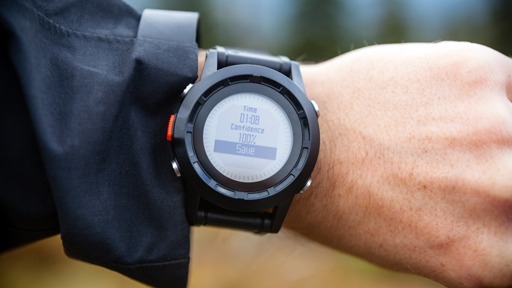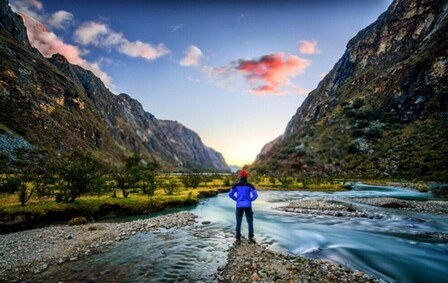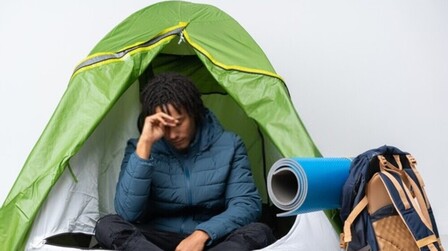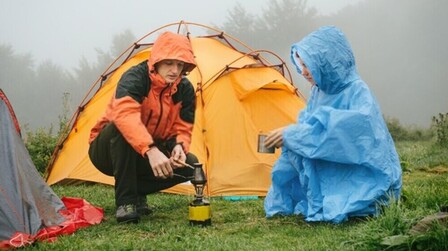Backpacking is quite the adventure. It requires a good amount of preparation, appreciation for the great outdoors, and courage to face the different obstacles of independent journeys. With this type of recreation, it is important to have a go-to checklist so that every time you have the urge to go out, you won’t have to think up of all the things you need all over again from scratch.
In this list, there are a lot of necessities you have to check and go through carefully while there are some that can be left out depending on your situation and specific adventure. It all begins with proper planning, giving you an outline of all the things that you’ll need for the duration of the entire trip. The last thing you want while you’re in the middle of the journey is noticing your lack of supplies and forgetting some important equipment or tools, fully aware that all of these could have been avoided with proper planning.
To ensure that you have a smooth-sailing backpacking adventure, you’ll need to secure:
Your Travel Gear
This is different from the usual day trip planning. Short hikes require the basics of survival for the day, not taking into account the other necessities of overnight travels.
1. Bag
The first thing to consider is the size of the bag you’ll be bringing with you. This will determine the number of necessities you can carry and the limit of what you can pack behind you. It is important to determine and plan this through early on and while making your checklist, giving you the power to adjust the overall carrying capacity.
2. Sets of Clothing
When planning your backpacking trip, you’ll want to know exactly what weather situation you should be expecting for the entire duration.
This determines if you can travel with short sleeved clothing when expecting warm weather or with long-sleeves and a jacket if it will be colder on the next couple of days.
3. Footwear and Socks
The next thing you should consider is what shoes you will wear and if you’d need lighter footwear for rest periods. It’s a given that your backpacking shoes should be capable of handling long walks and hikes, much more so if you’ll be trekking up mountainous areas.
Hiking shoes or boots are good investments and are greatly recommended. But of the two, hike shoes are better for casual trips while the boots can get you to challenging peaks.
4. Hat / Cap
A hat or cap is a pretty helpful equipment that is useful as well as stylish. Besides the added style, it can keep you warm during cold weather, be a cover against strong rains, and can protect you from too much glare and heat from the summer sun.
The various benefits it has makes it a great travel gear that will be handy in any weather you plan your backpacking trip.
5. Pants or Shorts
When travelling for days, it’s important to assure that comfort meets safety. This concept applies to every piece of clothing, including your pants.
If you will be travelling in a forest or a rocky path, it’s best to wear pants that will keep your skin off unsure surfaces. Shorts come in handy when the path you’ll be travelling in isn’t as tough or won’t have too much contact with your skin. Make sure you balance off comfort and safety to ensure a successful trip.
6. Hiking Watch

Besides the usual clothing, it is highly recommended to get a hiking watch. It is a pretty handy and versatile tool that gives you a lot of information with just one tool.
Besides telling the date and time, most hike watches give you data on the environmental condition. It provides information on the altitude, temperature, and usually has a compass feature to let you know where you are.
The features might seem unnecessary for daily use, but they greatly help when you’re on an outdoor trip, especially backpacking which lasts for a couple of days. Factoring in if you get lost, this will surely be your best travel guide to lead you back into familiar paths along with a map.
Your Survival Kit

As there are travel gears that you will need to equip yourself with when you proceed with your backpacking adventures, you will also need the supplementary supplies to keep you up as you travel along. Clothing alone is enough for a quick trip, but longer than that requires you to think carefully about the things that you bring with you, especially with a limited bag capacity.
1. Tent and Sleeping Bag

Because you’ll be out for 3 days, you will need to think about where you will be sleeping. If you plan on lodging, this won’t be necessary. However, if you plan on spending the night outdoor and with nature, this will be an important consideration.
We are never sure of what lurks in the forest at night, and having a tent and sleeping bag will be a big help to keep you safe and secure as you sleep compared to being out in the open and unprotected for a few hours.
2. Food, Snacks, and Utensils
The next step is what you eat for lunch and dinner. Canned goods are often the best ideas, as they are portable, filling, can last for long periods, and are easily disposable.
Other options can be food that you can cook, provided that you’ll just need to bring cooking utensils and other cookware to safely prepare the food. The extra trouble can be worth it, but if it is too much, you can opt for the canned food instead.
3. Water, Container, and Filter
Remember that the general rule of thumb is a liter of water every two hours of hiking. Moving around that rule, you can then prepare how much water you’ll bring, the size of your container, and even plan out your entire trip.
You can map out the time of your walk, from the rest periods, resupplying of water, and the destination. Just make sure you have a good water filter to ensure that your water supply is safe for consumption.
4. Toiletries
Toiletries will provide for your hygienic needs and is important for a 3-day journey. Be sure to pack in the basics: toothbrush, toothpaste, tissues, lotions, and other personal items you may need.
5. First Aid Kit

Backpacking can be quite an adventure, but it has some dangers to it as well. Travelling unprepared is very risky, especially when accidents occur.
It doesn’t matter if you get injured slightly or if you get a large cut from pointed branches or trips on rocks, because if you don’t disinfect and cover up the wound quickly, it might get infected and cause more damage.
Alcohol, disinfectants, medicine, bandage, other personal medications must be brought at all times.
6. Insect Repellent

If the location you plan on journeying is a forest, it’s imperative to bring a mosquito repellent with you. Even if it’s just a simple trail, the threat of insects biting and causing illness is always there. This can be avoided by just bringing and applying insect repellent, keeping you safe from insect bites.
7. Sunblock
Since you’ll be out for a couple of days, sunblock is necessary to bring. Most travellers experience sunburn after their trips, and it’s not a pleasant experience to have.
Sunblock keeps you away from harmful ultraviolet rays, and keeps your skin moisturized on hot weather, especially during the summer. Apply sunblock every morning to minimize the harm of too much exposure to the sun.
8. Swiss Knife

Due to the unexpectedness of the wilderness, you need to be prepared for any incident. A Swiss knife contains a lot of nifty tools, it can serve as a can opener, bottle opener, nail cutter, protection against wild animals, cutter for vines, and much more depending on the type you’ll be getting. All of these features are packed into one small equipment, making it a big help to have.
9. Map and Compass

This isn’t usually needed on short and easy trails, but is a requirement for longer paths during the course of your 3-day travels.
The last thing you want on your trip is getting lost, making your outdoor trip full of worries and misadventures. This can be remedied with the help of a map and compass (alternatively, a hike watch can be your compass). You can find your way back faster and with guidance from these tools.
10. Flashlight and Whistle
Nighttime travels aren’t recommended at any trip, but can’t always be avoided. A flashlight and whistle is a must in these instances.
Since you’ll be travelling for 3 days, nighttime is already in the itinerary, making these a necessity. The flashlight will help guide your path, while the whistle is a good pinpointing beacon to guide others to your path or to notify an emergency if any instance does occur.
A Smooth-sailing 3-Day Backpacking Trip
Adventures are always great to have and they also leave pleasant memories. When planned carefully, the trip will be more enjoyable and can sometimes give you more time for relaxation and for appreciating nature.
There are a lot of considerations to make on journeys that take a few days to complete, but as long as you follow the checklist properly while planning it out carefully, you’re sure to enjoy the trip.














